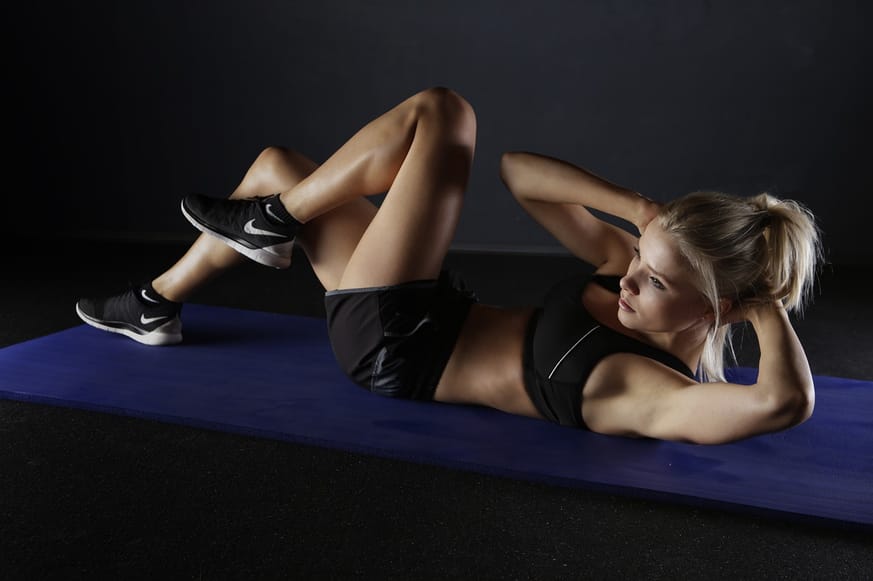Summary
In today`s fast-paced world, mastering your home workout has never been more important. This article dives into the transformative potential of barbell exercises at home, offering insights that empower you to achieve remarkable fitness goals without stepping foot in a gym. Key Points:
- Home barbell training can lead to significant muscle hypertrophy, often outperforming traditional gym workouts when approached with proper programming and progressive overload.
- Utilizing advanced biomechanical analysis and smart home technologies helps minimize injury risks while providing personalized feedback for effective training.
- A data-driven approach to periodization and recovery is essential for maximizing results in home environments, focusing on metrics beyond just reps and sets.
Ready to Transform Your Home Gym with a Barbell?
My First Barbell Workout at Home: A Story of Frustration and Triumph
“Come on! You’ve got this!” I whispered to myself, trying to channel some motivation. But after several failed attempts and awkward movements, frustration settled in deep. Just then, my phone buzzed—Jake’s message popped up: “How’s it going?”
I sighed heavily before typing back, “Not great… can’t even finish one set without feeling like a total mess.” Time dragged on; what was meant to be a quick 30-minute session turned into an hour of self-doubt and sweat pouring down my face.
Eventually, defeated but determined—I rolled up the yoga mat and muttered under my breath, “Maybe tomorrow will be better.” Little did I know that this setback would lead to something much greater ahead.
| Exercise | Muscle Groups Targeted | Sets/Reps | Rest Time | Benefits |
|---|---|---|---|---|
| Barbell Back Squat | Quads, Hamstrings, Glutes | 4 sets of 8-12 reps | 90 seconds | Builds lower body strength and stability. |
| Bench Press | Chest, Triceps, Shoulders | 4 sets of 8-12 reps | 90 seconds | Develops upper body strength and mass. |
| Barbell Row | Back, Biceps, Shoulders | 4 sets of 8-12 reps | 90 seconds | Enhances back thickness and improves posture. |
| Deadlift (Conventional) | Hamstrings, Glutes, Lower Back | 3 sets of 6-10 reps | 120 seconds | Promotes overall strength and power development. |
| Overhead Press (Standing) | Shoulders, Triceps, Upper Chest | 3 sets of 8-12 reps | 90 seconds | Improves shoulder stability and upper body strength. |
The Turning Point: Overcoming My Early Home Barbell Struggles
"Uh, should we take a break?" Jake suggested, glancing around as if searching for an escape route from the tension that hung thick in the air. Some of us exchanged uneasy looks; others fiddled with their phones or stared off into space. “I mean… it’s just weights,” Sarah added hesitantly, but her voice lacked conviction.
We all felt it—the unspoken pressure creeping in like an unwelcome guest at a party. My insecurities started seeping into our sessions; everyone seemed more cautious now. The energy was different—there was a palpable hesitation before every lift, and I couldn't shake off that nagging sense of responsibility to lighten the mood.
Eventually, after one particularly awkward attempt at a deadlift where I almost lost my grip completely, someone muttered under their breath about needing snacks instead of weights. The moment lingered long enough for us all to chuckle nervously—but then nothing else was said after that.
Building Your Home Barbell Setup: Essential Gear and Safety Tips
We decided to experiment with different arrangements over the weekend, but it didn’t go as smoothly as we hoped. “We tried putting the squat rack in the corner,” one of us mentioned, “but it felt cramped and awkward.” While some liked the idea of having everything compact, others argued about potential risks of bumping into equipment. The atmosphere was tense again; laughter had faded into deep discussion filled with uncertainty about what would really work best in our unique spaces—leaving us all wondering if we were truly on the right track or just complicating things further.

 Free Images
Free ImagesFrequently Asked Questions: Getting Started with Barbell Exercises at Home
Another frequent question revolves around grip technique: “Does my grip really matter?” Absolutely! The type of grip you use, whether it’s overhand or underhand, can dramatically influence which muscles are engaged during your lifts. So don’t underestimate this aspect; taking the time to master your grip will pay off in better results.
Footwear might not be something you immediately think about when lifting weights at home, but believe me, proper shoes are essential! Flat-soled shoes help with stability and can prevent unnecessary injuries during those heavy lifts. I remember switching from cushioned sneakers to flat shoes and noticing a huge difference in my balance!
Lastly, it's crucial to create an optimal workout environment. You wouldn’t want any obstructions while lifting heavy weights—imagine dropping a barbell because you tripped over something! Make sure your space has adequate flooring that absorbs impact too; this protects both you and your equipment from damage.
So as you embark on this fitness journey with barbells at home, keep these tips in mind for a safer and more effective workout experience! 🌟
Beyond the Basics: Exploring Advanced Barbell Exercises for Home Workouts?
Space Constraints and Safety Concerns: Navigating the Challenges of Home Barbell Training?
Mastering Essential Barbell Movements: From Squats to Deadlifts
When it comes to home workouts, barbell exercises stand out for their ability to build strength and stability. This guide will walk you through essential barbell movements, focusing on squats and deadlifts—two cornerstone exercises that can transform your fitness routine. By mastering these lifts, not only do you enhance your overall strength, but you also engage multiple muscle groups effectively.
I remember when I first started my journey with barbells; I struggled with the correct form and felt overwhelmed by the technicalities. Many beginners don’t realize how crucial proper technique is—not just for results but also for injury prevention. So let's dive into some actionable steps that will help you perfect these movements.
#### Step 1: Setting Up Your Space
- **Tools Needed:** A sturdy barbell (preferably made of high-carbon steel), weight plates (start light if you're a beginner), and a flat surface.
- **Tip:** Ensure your workout area is spacious enough to accommodate your movement without any obstructions.
#### Step 2: Understanding Grip Width
Now we get into the nitty-gritty! For squats:
- Stand shoulder-width apart.
- Grip the bar slightly wider than shoulder-width at mid-chest level.
For deadlifts:
- Feet should be hip-width apart.
- Use an overhand grip or mixed grip depending on what feels comfortable.
*Remember:* Adjusting grip width can significantly affect performance; experimenting here is key!
#### Step 3: Perfecting Your Stance
Before lifting:
- For squats, position feet slightly turned outwards to ensure balance.
- For deadlifts, keep toes pointing forward or very slightly outward based on comfort.
*Personal Note:* I like using a mirror during practice—this helps me check my alignment!
#### Step 4: Executing the Movement
**Squats:**
1. Take a deep breath before lifting the bar from its rack and place it across your upper back (not on your neck).
2. Lower yourself as if sitting back in a chair while keeping your chest up and core engaged.
3. Push through your heels to return to standing.
**Deadlifts:**
1. Approach the bar so that it’s over mid-foot.
2. Bend at hips and knees to grab the bar with straight arms.
3. Lift by straightening legs while maintaining a neutral spine until fully upright.
*Pro Tip:* Count slowly while performing each phase of these lifts; this ensures control throughout!
#### Final Tips for Progression
Once you're comfortable with form, consider implementing progressive overload by gradually increasing weights every week—just remember not to rush this process! If you're looking for advanced variations like sumo deadlifts or front squats down the line, those can further diversify your training regimen.
If you have energy left after completing sets, take time to stretch properly—a vital part of any workout routine that many overlook! Stretching helps prevent stiffness and promotes recovery between sessions.
By following these simple yet effective steps, you'll not only conquer basic barbell movements but also lay a solid foundation for more complex exercises as you progress in your fitness journey. Happy lifting!

What`s Next? Expanding Your Home Barbell Workout Routine
Level Up Your Home Fitness Journey: A Recap and Next Steps
Moreover, understanding key parameters like weight capacity and grip diameter will help you select the right equipment tailored to your needs. As you progress through your training, don't shy away from challenging yourself with progressive overload—this is where true muscle growth happens. Embrace compound lifts such as squats and deadlifts that engage multiple muscle groups simultaneously, making every rep count.
However, don’t forget about creating a safe workout environment! Ensure you have adequate space and tools like mats or squat racks at your disposal to enhance safety during exercises.
This trend towards home fitness isn’t going anywhere; it’s time we adjust our mindset and strategies accordingly. So why wait? Start implementing these techniques today and discover how they transform your fitness routine into something extraordinary!
Reference Articles
Get A Total Body Workout At Home With Only A Barbell
Once-A-Week Total-Body Training Program. 1. Barbell back squat. 4 sets, 8-12 reps (rest 90 sec.).
Source: Bodybuilding.comAll You Need Is A Barbell – A Whole Body Workout
With just a barbell in hand, you can do a plethora of full-body exercises, targeting your chest, biceps, back, quads and abdominals.
Source: Gym and FitnessHome Barbell Workout
Day 1 · Floor Bench Press · EZ-bar Pullover · Underhand Press Raise · Barbell Shoulder Press · Barbell Upright Row · ...
Source: Muscle & FitnessBarbell Workouts: Simplify Strength Training with One Essential Tool
The big 5 exercises · 1. Back squat · 2. Bench press · 3. Barbell row · 4. Deadlift · 5. Overhead press.
Source: GreatistTake on This 6-Move Barbell Workout for Full Body Gains in 30 Minutes
Take on This 6-Move Barbell Workout for Full Body Gains in 30 Minutes · FORM CHECK · Push Press x 6 ...
Source: Men's HealthHome Or Gym Barbell Workout Routine
Barbell Only Muscle Building Workout ; Seated Overhead Press, 3, 6-12 ; Barbell Rows, 3, 6-12 ; Incline Bench Press, 3, 6- ...
Source: Muscle & StrengthThe 16 Best Full Body Barbell Workouts For Strength And Mass
Barbell Workouts | 16 Barbell Exercises to Build Strength & Stay Toned · 2. Deadlift · 3. Pendlay Row · 4. Romanian Deadlift · 5.
Source: Myprotein6 Exercises to Try for the Best Barbell Workout
Barbell Bench Press · Lie on your back on a bench holding the barbell directly over your shoulders on a rack with ...
Source: Peloton


 ALL
ALL Sports Data Science
Sports Data Science
Related Discussions